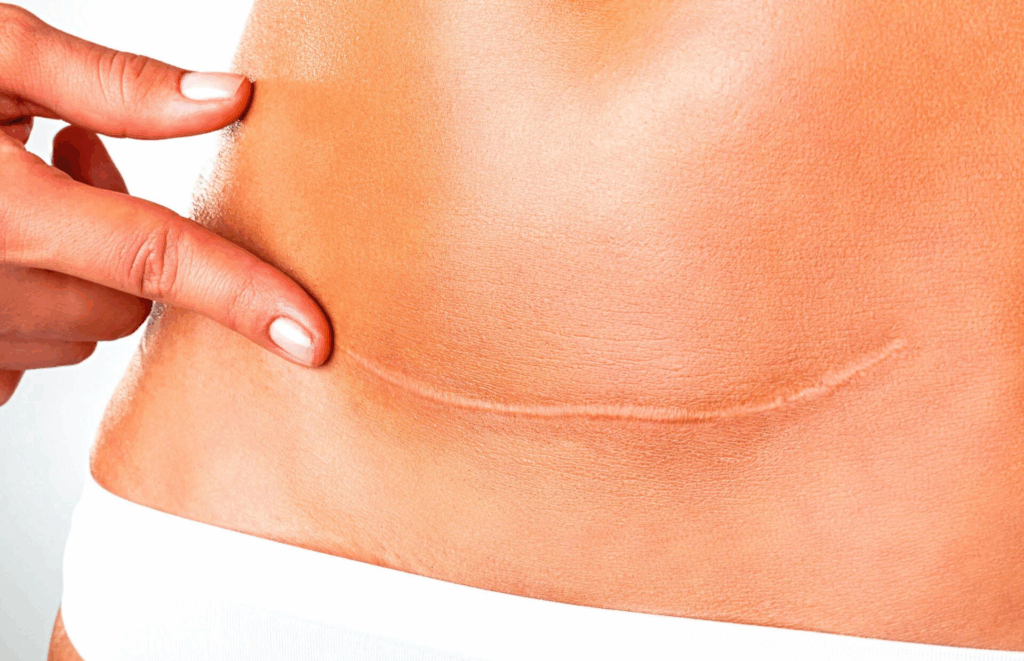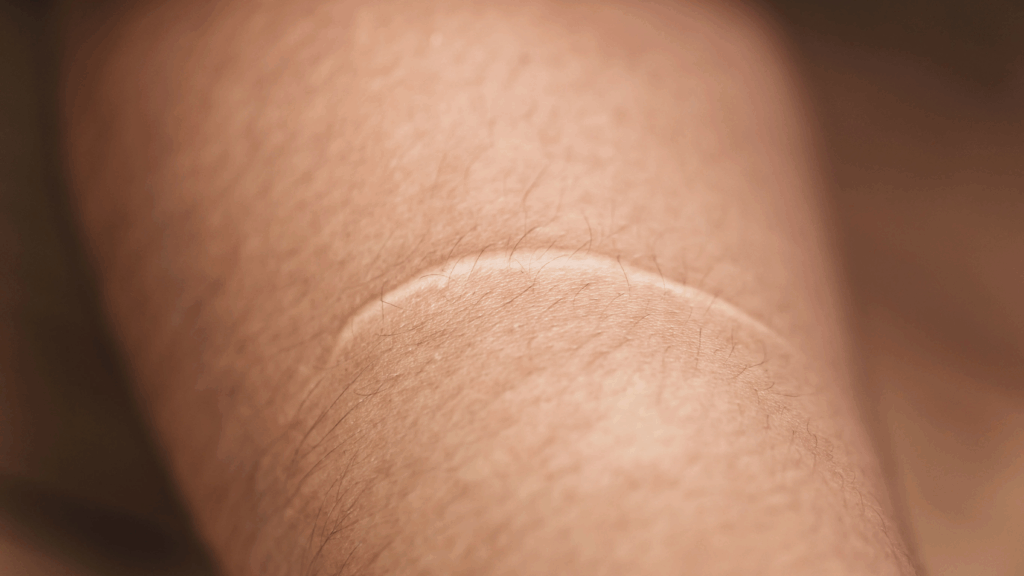Einführung
Die Wahl des richtigen chirurgischen Ansatzes zur Narbenkorrektur ist entscheidend für optimale Ergebnisse. Die Eigenschaften und die Lage der Narbe beeinflussen den Entscheidungsprozess maßgeblich. Das Verständnis dieser Faktoren hilft Chirurgen, ihre Techniken individuell an die Bedürfnisse des Patienten anzupassen.
Faktoren, die die Narbenkorrektur beeinflussen
Bei der Bestimmung des besten chirurgischen Ansatzes zur Narbenkorrektur spielen mehrere Schlüsselfaktoren eine Rolle:
- Narbenstelle: Die Position der Narbe am Körper beeinflusst die Wahl der Operationstechnik. Beispielsweise erfordern Narben im Gesicht möglicherweise präzisere und weniger invasive Methoden als Narben am Rumpf.
- Narbenmerkmale: Art, Größe und Tiefe der Narbe sind wichtige Faktoren. Keloidnarben erfordern beispielsweise andere Behandlungsansätze als hypertrophe oder atrophe Narben.
- Patientengesundheit: Der allgemeine Gesundheitszustand und die Krankengeschichte des Patienten können den Operationsplan beeinflussen. Erkrankungen wie Diabetes oder Immunstörungen können zusätzliche Vorsichtsmaßnahmen erforderlich machen.
Vergleich chirurgischer Ansätze
Verschiedene Operationsmethoden bieten unterschiedliche Vorteile und Einschränkungen. Hier ist ein vergleichender Überblick:
| Chirurgische Methode | Vorteile | Einschränkungen |
|---|---|---|
| Exzision | Wirksam zur Entfernung kleiner, unauffälliger Narben | Kann eine neue Narbe hinterlassen; nicht ideal für große Narben |
| Z-Plastik | Reduziert die Spannung und Sichtbarkeit der Narbe | Kann komplex und zeitaufwändig sein |
| W-Plastik | Löst lineare Narben auf und macht sie weniger auffällig | Möglicherweise nicht für alle Narbentypen geeignet |
| Lasertherapie | Nicht-invasiv, reduziert Rötungen und fördert die Kollagenproduktion | Mehrere Sitzungen können erforderlich sein; nicht bei allen Narbentypen wirksam |

Narben verstehen: Arten und Merkmale
Narben sind ein natürlicher Teil des Heilungsprozesses. Das Verständnis ihrer Arten und Merkmale ist jedoch entscheidend für die Wahl des optimalen chirurgischen Ansatzes. Verschiedene Narbenarten können auf unterschiedliche Grunderkrankungen und Heilungsprozesse hinweisen, was die Wahl der Operationstechnik maßgeblich beeinflussen kann.
Hypertrophe Narben
Hypertrophe Narben sind erhaben, gerötet und jucken oft. Sie entstehen, wenn der Körper während des Heilungsprozesses zu viel Kollagen produziert. Dies führt zu einer dicken, erhabenen Narbe, die innerhalb der ursprünglichen Wunde verbleibt. Diese Narben können unangenehm sein und ästhetische Probleme verursachen.
Keloidnarben
Keloidnarben ähneln hypertrophen Narben, erstrecken sich jedoch über die ursprünglichen Wundgrenzen hinaus. Sie entstehen durch eine Überproduktion von Kollagen und können deutlich größer sein als die ursprüngliche Verletzung. Keloide treten häufiger bei Menschen mit dunklerer Haut auf und können aufgrund ihrer Rezidivneigung schwierig zu behandeln sein.
Behandlungsmöglichkeiten für Keloidnarben
| Behandlung | Beschreibung | Effektivität |
|---|---|---|
| Kortikosteroid-Injektionen | Reduzieren Sie die Entzündung und verkleinern Sie die Narbe | Mäßig |
| Kältetherapie | Friert das Narbengewebe ein, um seine Größe zu reduzieren | Hoch |
| Lasertherapie | Reduziert Rötungen und glättet die Narbe | Mäßig bis hoch |
Atrophische Narben
Atrophische Narben erscheinen als eingesunkene oder narbige Stellen auf der Haut. Sie entstehen, wenn die darunterliegenden Strukturen, die die Haut stützen, wie Fett oder Muskeln, verloren gehen. Diese Narben treten häufig bei Erkrankungen wie Akne auf und können aufgrund ihrer Tiefe schwer zu behandeln sein.
Kontrakturnarben
Kontrakturnarben entstehen durch erheblichen Gewebeverlust, häufig durch Verbrennungen. Sie führen zu einer Straffung und Verhärtung der Haut, was die Bewegungsfreiheit einschränken und sogar Muskeln und Nerven beeinträchtigen kann. Diese Narben erfordern oft einen chirurgischen Eingriff, um Funktion und Beweglichkeit zu verbessern.
Chirurgische Ansätze bei Kontrakturnarben
| Operationstechnik | Beschreibung | Effektivität |
|---|---|---|
| Hauttransplantation | Transplantiert gesunde Haut aus einem anderen Bereich | Hoch |
| Gewebeexpansion | Dehnt die umgebende Haut, um die Narbe zu bedecken | Mäßig bis hoch |
| Z-Plastik | Richtet die Narbe neu aus, um die Spannung zu verringern | Hoch |
,
Abschluss
Zusammenfassend lässt sich sagen, dass die Narbenkorrektur ein vielschichtiger Prozess ist, der einen individuellen Ansatz erfordert, um optimale Ergebnisse zu erzielen. In diesem Artikel haben wir verschiedene Techniken untersucht, von chirurgischen Eingriffen bis hin zu nicht-invasiven Behandlungen, die jeweils einzigartige Vorteile und Überlegungen bieten.
Es ist wichtig zu erkennen, dass es keine einheitliche Methode gibt, die für alle Fälle geeignet ist. Faktoren wie die Art der Narbe, ihre Lage, der allgemeine Gesundheitszustand des Patienten und individuelle Präferenzen spielen eine wichtige Rolle bei der Bestimmung des effektivsten Behandlungsplans.
Die Beratung durch qualifiziertes medizinisches Fachpersonal kann nicht genug betont werden. Ihr Fachwissen kann Sie durch die verfügbaren Optionen führen und Ihnen helfen, eine fundierte Entscheidung zu treffen, die Ihren spezifischen Bedürfnissen und Zielen entspricht.
Letztendlich stellt ein personalisierter Ansatz zur Narbenkorrektur sicher, dass die Behandlung auf Ihre individuelle Situation zugeschnitten ist und die Chancen auf ein erfolgreiches Ergebnis und eine verbesserte Lebensqualität maximiert werden.
,
Häufig gestellte Fragen
In diesem Abschnitt werden häufige Fragen zur Narbenkorrektur und zu den besten chirurgischen Vorgehensweisen behandelt.
Was ist eine Narbenkorrektur?
Unter Narbenkorrektur versteht man chirurgische Eingriffe, die darauf abzielen, das Erscheinungsbild von Narben zu minimieren, sie weniger auffällig zu machen und sie besser an den umgebenden Hautton und die Textur anzupassen.
Wann ist der beste Zeitpunkt für eine Narbenkorrektur?
Der optimale Zeitpunkt für eine Narbenkorrektur hängt von Art und Ausmaß der Narbe ab. Generell ist es ratsam, zu warten, bis die Narbe vollständig ausgereift ist, was bis zu einem Jahr dauern kann. Manche Narben können jedoch von einem früheren Eingriff profitieren.
Welche verschiedenen Arten von Narbenkorrekturverfahren gibt es?
| Verfahren | Beschreibung | Am besten für |
|---|---|---|
| Z-Plastik | Eine chirurgische Technik, bei der die Narbe neu positioniert wird, um sie weniger sichtbar zu machen. | Lineare Narben |
| Hauttransplantation | Dabei wird gesunde Haut von einem Körperbereich in den vernarbten Bereich transplantiert. | Große, tiefe Narben |
| Gewebeexpansion | Ein Verfahren, bei dem ein ballonartiges Gerät unter die Haut eingeführt wird, um die Haut zu dehnen und neue Haut wachsen zu lassen. | Brandnarben |
| Lasertherapie | Verwendet Lasertechnologie, um die Rötung zu reduzieren und die Beschaffenheit von Narben zu verbessern. | Hypertrophe und Keloidnarben |
Welche Risiken und Komplikationen gibt es bei einer Narbenkorrektur?
Wie bei jedem chirurgischen Eingriff besteht auch bei der Narbenkorrektur das Risiko von Infektionen, Blutungen und Nebenwirkungen der Narkose. Zu den besonderen Risiken zählen Veränderungen des Hautgefühls, schlechte Wundheilung und die Möglichkeit wiederkehrender oder neuer Narbenbildung.
Entdecken Sie die Expertise von Dr. Ebru Okyay, Ihrem vertrauenswürdigen Hautarzt In Antalya. Ob Sie medizinische Hautprobleme behandeln oder Ihre natürliche Schönheit mit kosmetischen Behandlungen verbessern möchten, Dr. Okyay hilft Ihnen. Mit individueller Pflege und fortschrittlichen Techniken war es nie einfacher, Ihre Hautziele zu erreichen.
